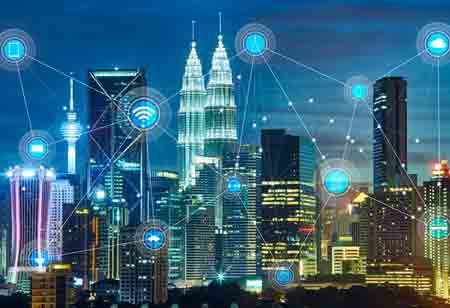THANK YOU FOR SUBSCRIBING
How Edge Computing is Driving the Smart Cities of the Future?
In this data deluge, edge intelligence with machine learning capabilities is marking a groundbreaking transformation in fructifying smart city initiatives by enhancing home automation, traffic and parking management, infrastructure management, build

By
Apac CIOOutlook | Tuesday, June 23, 2020
Stay ahead of the industry with exclusive feature stories on the top companies, expert insights and the latest news delivered straight to your inbox. Subscribe today.
In this data deluge, edge intelligence with machine learning capabilities is marking a groundbreaking transformation in fructifying smart city initiatives by enhancing home automation, traffic and parking management, infrastructure management, building security, and city assets management
Fremont, CA: Urbanization has gained rapid momentum across the world and, today, the cities contribute to more than 80 percent of global domestic product (GDP). With this exponential rate of urban transition, urban planners should adopt a future-proof approach. And if neglected, unplanned urbanization could lead to various environmental, developmental, and economic issues in the long run. However, this data-driven era presents itself with an opportunity to support a more sustainable urban transition. With the ubiquitous technology, the sheer volume of data generated across a city can provide a vast amount of advanced insights on its inhabitants’ behavior, needs, and habits. While this data plays a significant role in making a city smart and sustainable, its management can be a strenuous and expensive pursuit.
In this data deluge, edge intelligence with machine learning capabilities is marking a groundbreaking transformation in fructifying smart city initiatives by enhancing home automation, traffic and parking management, infrastructure management, building security, and city assets management. Its reliability and speed, coupled with less demand on network connectivity and internet bandwidth, have made it a significant technology for such initiatives. According to a report published by MARKETSANDMARKETS, the edge computing market will grow from $2.8 billion in last year to $9.0 billion in 2024 at a CAGR of 26.5 percent with smart cities holding the largest market size.
In edge computing, automated analytical computation of the data happens at the edge of the network rather than in a centralized data storage. The data received from sensors, network switches, and other internet of things (IoT) devices go through an analytics algorithm in which parameters are set to decide on what information is worth sending to the storage. It brings data pre-processing and decision-making closer to the data sources and helps in reducing the latency of the decision-making process in the connected devices. Edge intelligence structure, thus, has become a key performance indicator in smart city management today.
As smart cities are increasingly getting popular to embrace a higher standard of living and economic development, at the heart of it are digital technologies that offer significant potential for transformation. Smart cities will have to rely on edge computing infrastructure to leverage these cutting-edge technologies. An increasing number of urban planners have already started hosting edge computing nodes closer to the data sources to manage the ever-growing number of devices and services. However, besides this, urban planners should also build a scalable and secure infrastructure in the cloud to ensure the effective management of data. The vehicles and services will become automated in the foreseeable future, and edge computing is going to be very crucial in that data outburst.





